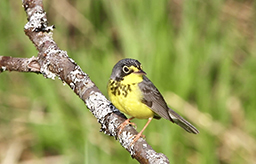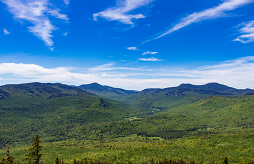.jpg)
Maine bird populations increasing on commercial woodlands: Study
A study conducted on commercial woodlands in Maine found that bird populations are increasing compared to 30 years ago. It indicates that sustainable forest management in working forests can support bird conservation.

A full 70 per cent of species analyzed in the study experienced increases in abundance, bucking continental trends, according to a paper published in March titled “The 30-Year Bird Study: The role of Maine’s commercial forests for regional and national bird conservation, 1992-2022." The area studied included land owned and managed by J.D. Irving, Limited, and the research will help inform J.D. Irving, Limited's forest management practices in Maine.
Lead researcher John Hagan from the University of Maine replicated the location and methodology of research undertaken 30 years ago that investigated how commercial forests in Maine impact bird conservation.
In the updated study, a total of 47 species were analyzed, with data collected using sound monitoring of birdsong in varied forest conditions. Contrary to trends of bird population decline across North America, 33 – or 70 per cent – of these species saw increased abundance compared to the 1990s.
The study concluded that “the commercial forests of Maine are contributing in a positive way to bird conservation at a large scale.”[1]
Sustainable forest management is at the root of J.D. Irving’s forestry operations. The resulting continuous cycle of harvest and renewal means there is a mix of tree age classes across the landscape. This leads to a range of forest conditions with different tree species, ages and structures that support species diversity.
The working forest also supports songbird species abundance in New Brunswick. For further reading, check out this story about a study conducted on the Canada warbler and olive-sided flycatcher – two species of concern – in the managed forest landscape of Black Brook, NB.
[1] Hagan, J., S. Levy, K. Anderson, P. McKinley, M. Reed, J. Gunn, and B. Shamgochian. 2024. The Thirty-year Bird Study: The role of Maine’s commercial forest for regional and national bird conservation, 1992-2022. Our Climate Common Report, Georgetown, Maine. 39 pp.
Questions about our Healthy Forest Approach? Read the FAQ.
(1).png?n=7605)
.jpg)










.jpg?n=6166)
.jpg)



